There are lots of tools for building AI Agents and at the core they need three things. First, they need to understand their overall purpose and the rules in which they should operate. So you might create an agent and tell it, “You’re here to help customers with generic requests about the existing services of the bank.” Secondly, we need a prompt, which is a request to the agent that an agent can try to fulfil. Finally, you need a set of tools. These are the actions and systems that an agent has access to in order to fulfill the request.
Most agent builders will wrap up those three requirements into a single, static, synchronous system, but at Camunda we decided not to do this. We found that it creates too many use case limitations, it’s not scalable and it’s hard to maintain. To overcome these limitations, we came up with a concept that lets us decouple these requirements and completely visualize an agent in a way that opens it up to far more use cases, not only on a technical level, but also in a way that alleviates a lot of the fears that people have when adding AI agents as part of their core processes.
The value of a complete visualization
Getting insight into how an AI Agent has performed in a given task often requires someone to read through its chain of thought (this is like the AI’s private journal, where it details how it’s thinking about the problem). This will usually let you know what tools it decided to use and why. So in theory if you wanted to check on how your AI Agent was performing, you could read through it. In practice, this is just not practical for two reasons:
1. It limits the visibility of what happened to a text file that needs to be interpreted.
2. AI agents can sometimes lie in their chain of thought—so it might not even be accurate.
Our solution to this is to completely visualize the agent, its tools and its execution all in one place.
Gain full visibility into AI agent performance with BPMN
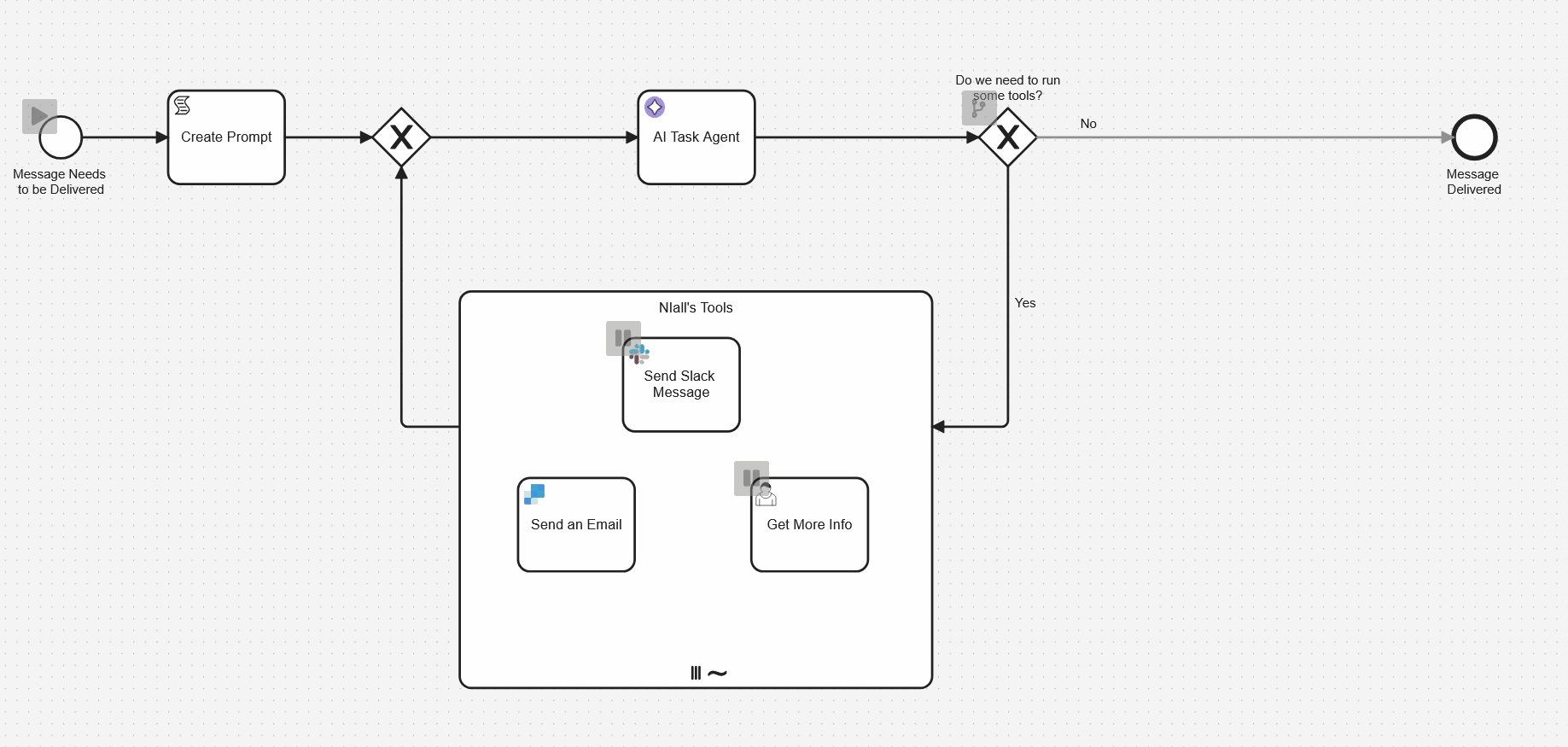
The diagram above shows a BPMN process that has implemented an AI agent. It’s in two distinct parts. The agent logic is contained within the AI Task Agent activity and the tools it has access to is displayed with an ad-hoc sub-process. This is a BPMN construct that allows for completely dynamic execution of the tasks within it.
With this approach the action of an agent is completely visible to the user in design time, during execution, and can even be used to evaluate how well the process performs with the addition of an agent.
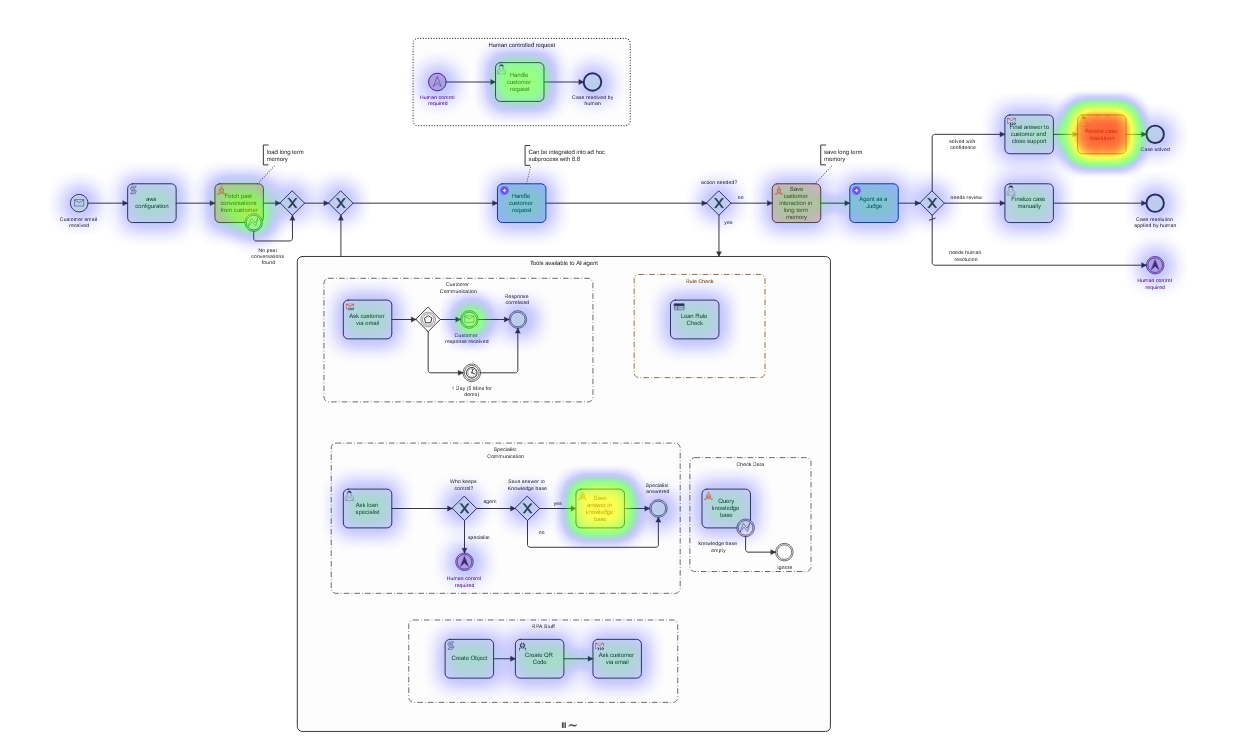
The diagram above shows a headmap which shows which tools take the longest to run. This is something impossible to accurately measure with a more traditional AI agent building approach.
Decoupling tools from agent logic
This design completely decouples the agent logic from the available tool set. Meaning that the agent will find out only in runtime what tools are at its disposal. The ramifications of this are actually quite profound. It means that you can run multiple versions of the same process with the same agent, but a completely different tool set. This makes context reversing far easier and also lets us qualitatively evaluate the impact of adding or removing certain tools through AB testing.
Improving maintainability for your AI agents
The biggest impact of this decoupling in my opinion though is how it improves maintainability. Designers of the process can add or remove new tools without ever needing to change or update the AI agent. This is a fantastic way of separating responsibilities when a new process is being built. While AI experts can focus on ensuring the AI Task Agent is properly configured, developers can build the tooling independently. And of course, you can also just add pre-built tools for the agent to use.
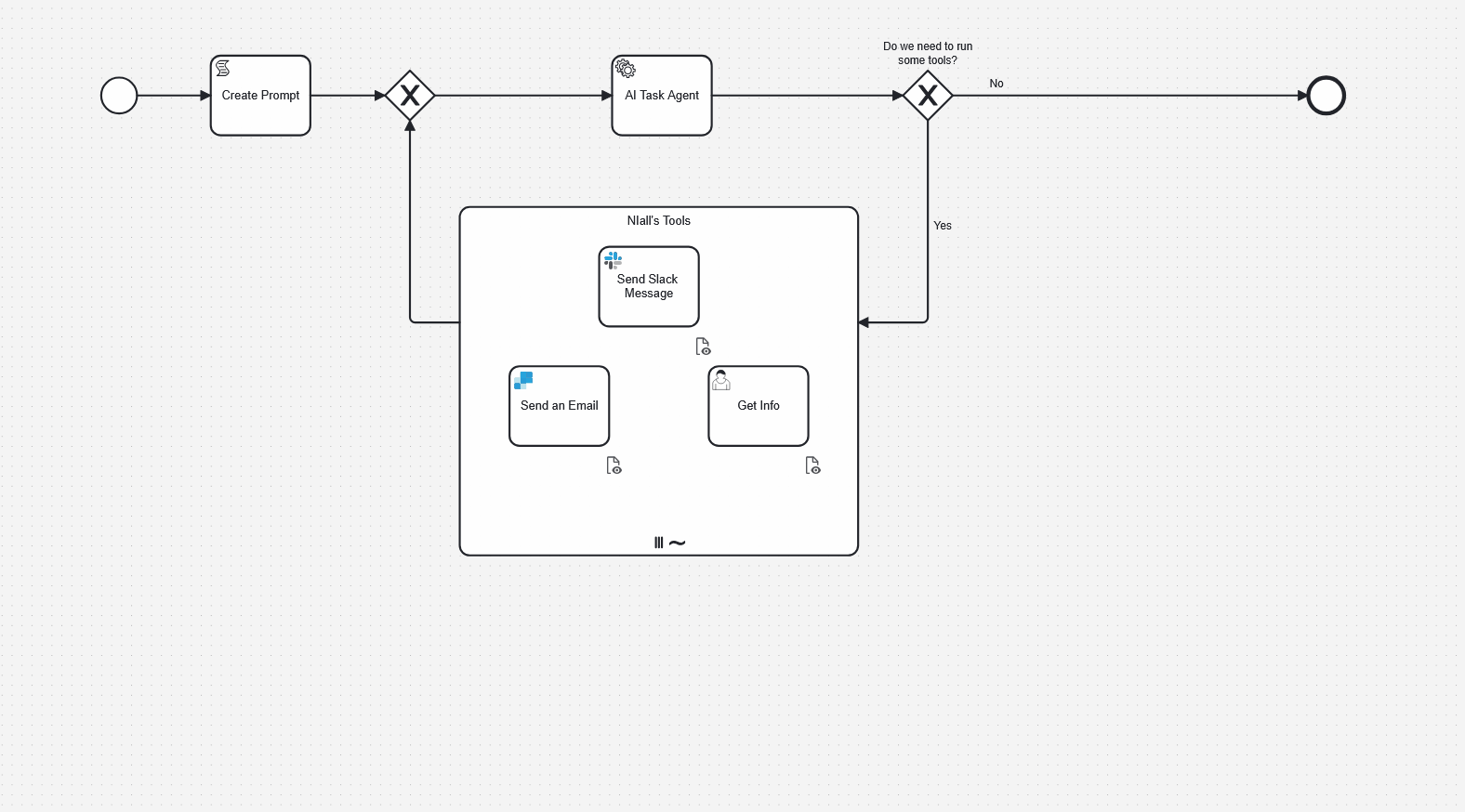
Composable design
Choosing, as we did, to marry AI agent design with BPMN design means we’ve unlocked access for AI agent designers to all the BPMN patterns, best practices and functionality that Camunda has been building over the last 10 years or so. While there’s a lot you gain because of that, I want to focus on just one here: Composable architecture.
Composable orchestration is the key to operationalizing AI
Camunda is designed to be an end-to-end orchestrator to a diverse set of tools, rules, services and people. This means we have designed our engine and the tools around it so that there is no limitation on what can be integrated. It also means we want users to be able to switch out services and systems over time, as they become legacy or a better alternative is found.
This should be of particular interest to a developer of AI agents because it lets you not only switch out the tools the AI Agent has access to, but more importantly, it lets you switch out the agent’s own LLM for the latest and greatest. So to add or even just test out the behaviour of a new LLM no longer means building a new agent from scratch—just swap out the brain and keep the rest. This alone is going to lead to incredibly fast improvements and deployments to your agents, and help you make sure that a change is a meaningful and measurable one.
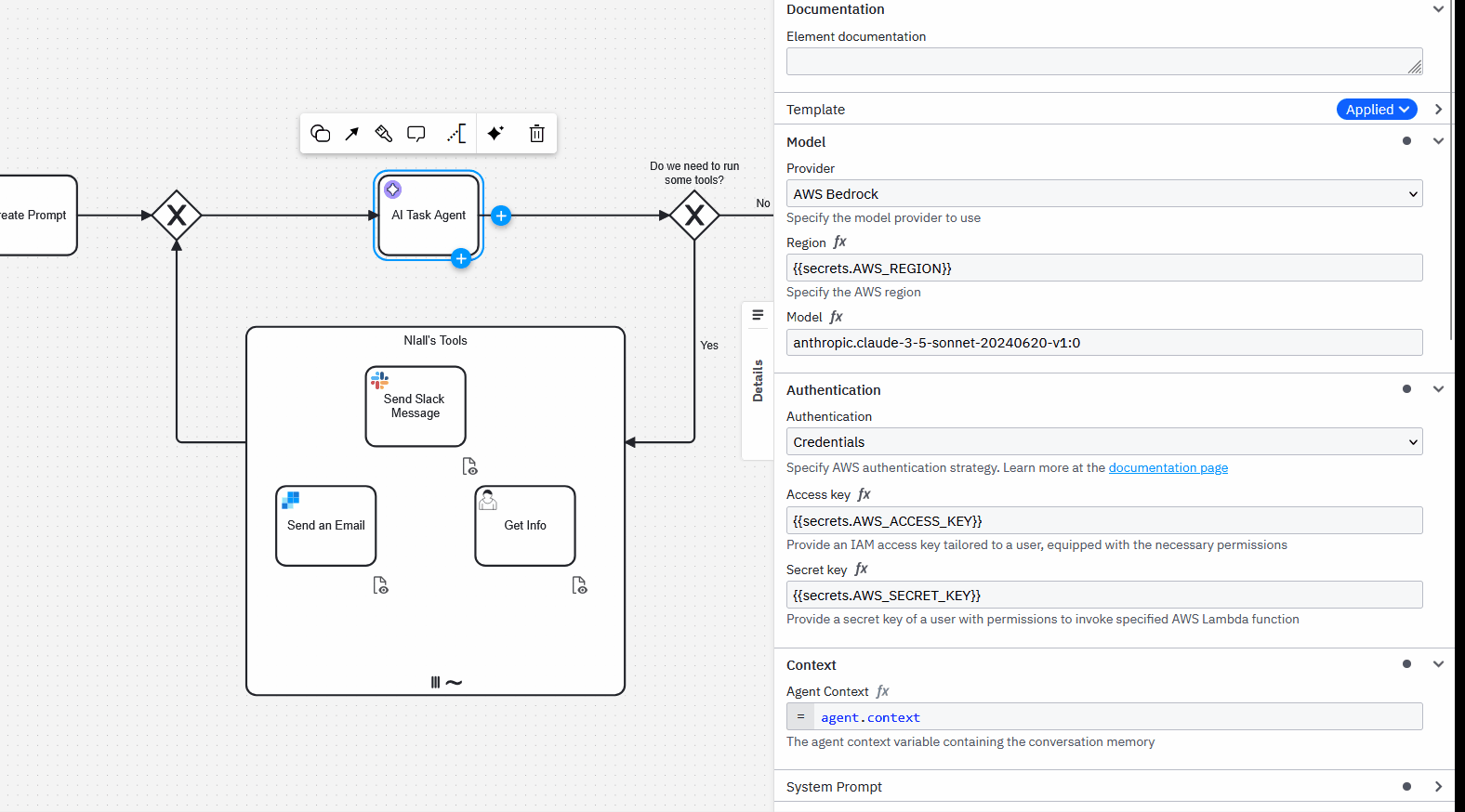
Conclusion
Building AI agents the default way that other tools offer right now leads you to adding a new black box to your system. One that is less maintainable and and far more opaque in execution than anything else you’ve ever integrated. This is going to make it hard to properly maintain and evaluate.
At Camunda we have managed to open up that black box in a way that integrates it directly into your processes as a first-class citizen. Your agent will immediately benefit from everything that BPMN does and become something that can grow with your process.
It’s important to understand that you’re still adding a completely dynamic aspect to your process, but this way you mitigate most concerns early on. For all these reasons, I can imagine that of all the many, many AI agents that are going to be built this year, I’m sure the only ones that will still be used by the end of next year will be built in Camunda with BPMN.
Try it out
All of this is available for you to try out in Camunda today. Learn more about how Camunda approaches agentic orchestration and get started now with a free trial here.
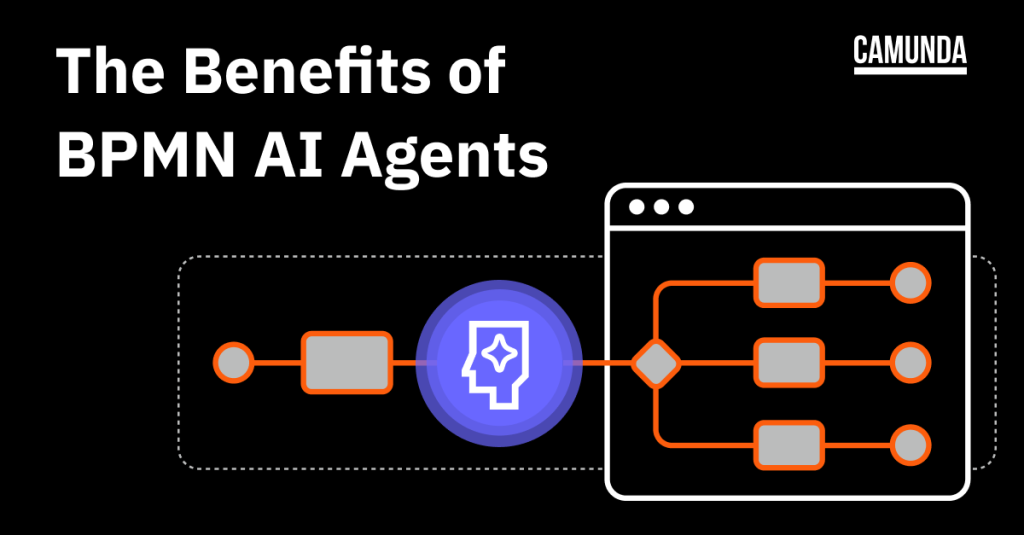


Start the discussion at forum.camunda.io